Tire Size 295/65r20 vs 35×12.50r20
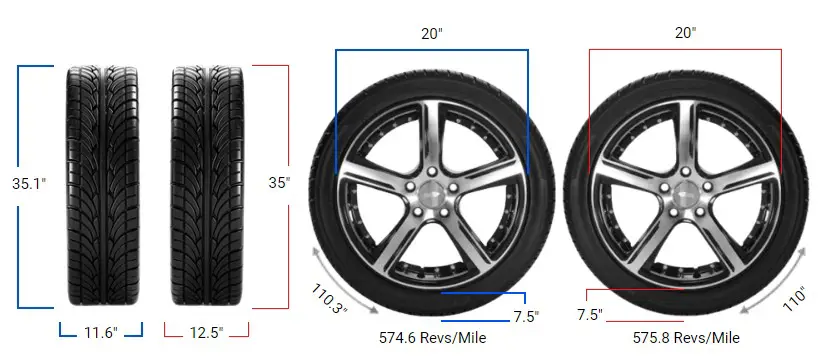
The main difference between tire sizes 295/65r20 and 35×12.50R20 lies in the section width. The 295/65r20 has a width of 11.61 inches, while 35×12.50R20 is wider at 12.52 inches. This 7.8% increase in width affects various performance aspects.
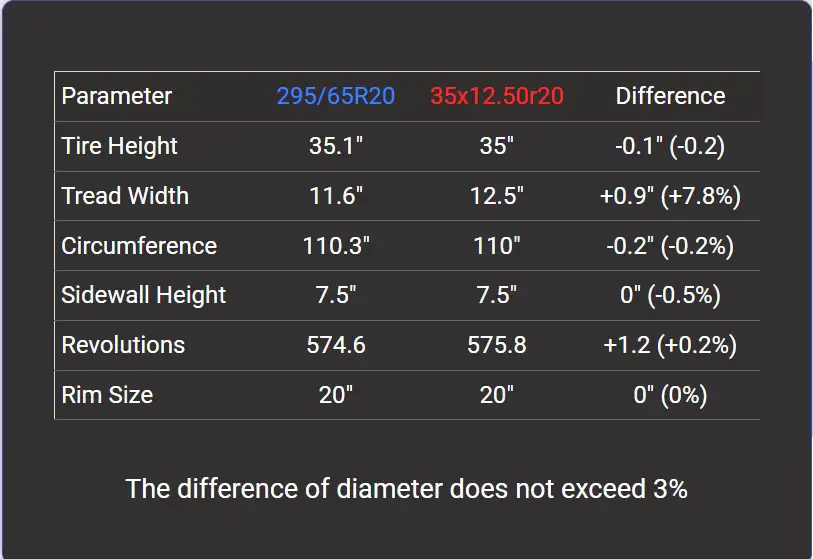
Fitment Guide
The 35×12.50R20 is only 0.2% larger in overall diameter and circumference. This minor difference means it can directly replace 295/65r20 tires without fitment issues.
No adaptations to accommodate the barely noticeable increase in size are required.
Ground Clearance
With just a 0.07-inch smaller diameter, the 35×12.50R20 offers virtually the same ground clearance as 295/65r20 tires.
Both clear obstacles and uneven terrain equally well without increased risk of scraping. The difference is negligible.
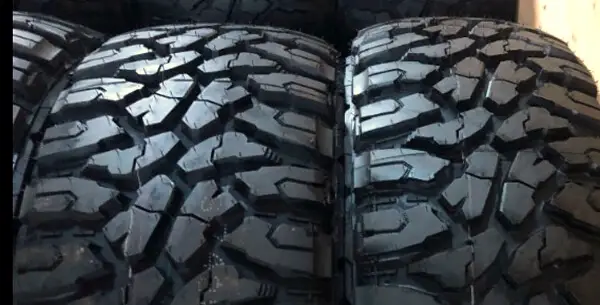
Gas Mileage
The wider 35×12.50R20 has a larger contact patch, which increases rolling resistance slightly. This results in marginally reduced fuel efficiency compared to the narrower 295/65r20. However, the difference is minor, and both offer respectable mileage.
Ride Comfort
While the 35×12.50R20 is fractionally shorter in sidewall height, the cushioning and impact absorption difference is imperceptible. Both absorb cracks and bumps effectively to provide a comfortable ride on-road and off-road.
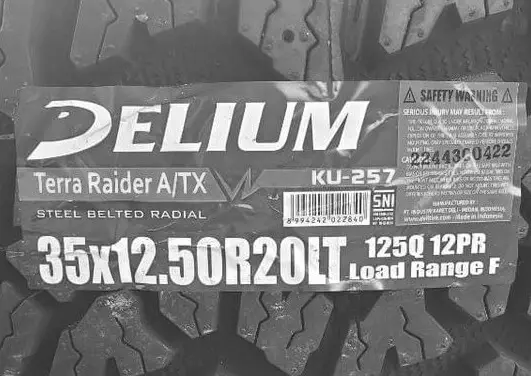
Aesthetics
Visually, the two sizes are difficult to distinguish. The 35×12.50R20 appears slightly “stretched” due to the 0.04-inch lower sidewall, but the difference is subtle. Overall, both offer a balanced aesthetic on trucks and SUVs.
Handling & Stability
With such minor dimensional differences, both sizes deliver responsive, stable handling and traction.
The 35×12.50R20 marginally shorter sidewall does not noticeably impact handling precision or road holding.
Noise & Vibration
While the wider 35×12.50R20 has a slightly larger air cavity, both sizes effectively dampen road noise and vibrations. Differences are negligible, and cabin noise remains low in either size.
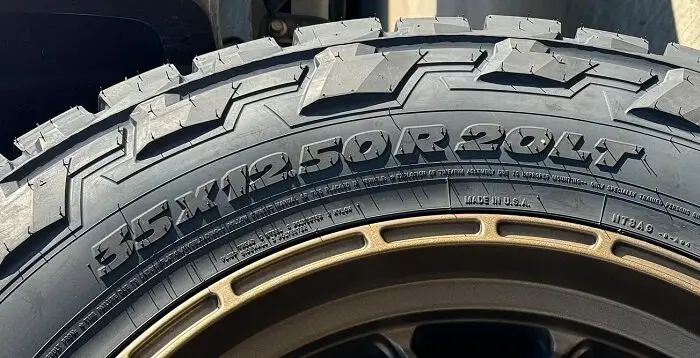
Durability & Wear
The additional width of the 35×12.50R20 distributes tread wear over a broader area, potentially improving evenness and extending tread life slightly. Both exhibit good durability.
Adverse Conditions
Performance in snow, ice, mud, and off-road conditions is comparable. The barely noticeable difference in ground clearance does not discernibly impact traction or capability. Both perform well overall.
Speedometer Reading
The 0.2% difference in diameter results in a minor 0.2% lower speedometer reading with the 35×12.50R20.
At an actual speed of 20 mph, the speedometer reads 19.96 mph. While not a significant deviation, it should be considered.
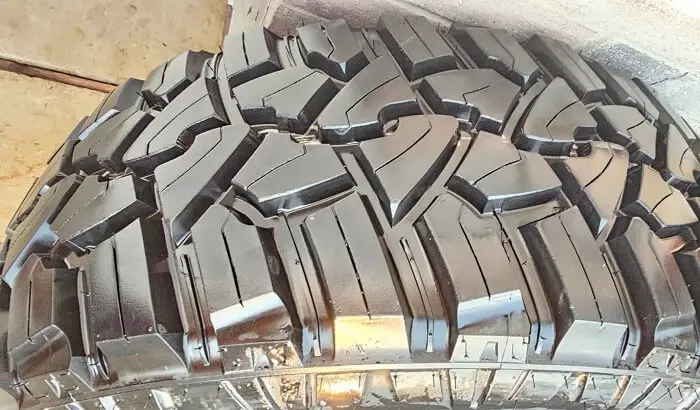
What Does 35×12.50r20 Mean?
The 35×12.50R20 tire size does not have an exact metric equivalent, but the closest would be 318/60R20 based on the measurements.
However, metric tire sizes are typically rounded to the nearest 5mm increment. So the nearest standard metric size to 35×12.50R20 is 315/60R20.
This standard metric 315/60R20 size has a section width of 315mm, which converts to 12.4 inches – very close to the 12.52-inch width of a 35×12.50R20 tire.
The aspect ratio is also similar at 60 for the metric size versus 60.8 for the 35×12.50R20. While not an exact match, the 315/60R20 metric tire size has dimensions comparable to 35×12.50R20 and would serve as a suitable metric equivalent.
Is A 295 Tire The Same As A 35?
No, a 295/65r20 tire is not the same as a 35×12.50r20 tire, although they are very close in size. The 295/65r20 tire is slightly narrower and taller than the 35×12.50r20 tire, but the difference in overall diameter is minimal (less than 0.2%). This means that in most situations, these tires can be used interchangeably.
What Does 295/65r20 Mean?
The tire size “295/65R20” denotes a tire that is 295 millimeters wide with a 65% aspect ratio, meaning the sidewall height is 65% of the tire’s width.
The “R” indicates radial construction, and the tire is designed to fit a 20-inch diameter wheel. Equivalently, the tire size 295/65r20 can be represented as 35.1×11.6R20 in inches.

How Much Taller Is A 35×12.50r20 Tire Than A 295/65r20?
The 35×12.50R20 tire is slightly taller than the 295/65R20, with a difference of 0.07 inches (1.9 mm), representing a 0.2% increase in diameter.
In terms of height, the 295/65R20 tire reaches 35.1 inches (891.5mm), while the 35×12.50R20 tire size is slightly larger at about 35.02 inches (889.6 mm).
How Much Wider Is A 35×12.50r20 Tire Than A 295/65r20?
The 35×12.50r20 tire is 0.91 inches (23 mm) wider than the 295/65r20, a 7.8% width increase. This nearly 1-inch extra width gives the 35×12.50r20 a broader, squatter stance.
The 35×12.50R20 tire boasts a width of approximately 12.52 inches (318 mm), while the 295/65r20 tire has a narrower profile at 11.61 inches (295 mm).
Can You Use 295/65r20 Instead of 35×12.50r20?
Yes, you can use 295/65R20 tires instead of 35×12.50R20 tires. The diameter difference between these two tires is only 0.2%, which is well within the recommended 3% limit. Just ensure the load capacity matches or exceeds that of the original tires.
Our Observation
Upon close examination, the 35×12.50R20 and 295/65r20 are remarkably similar in most dimensions and characteristics except for section width. In real-world conditions, the minor fractional differences in diameter, circumference, and sidewall height are imperceptible.
Both sizes offer comparable ride quality, handling, off-road capability, noise levels, and visual appeal. Either can directly replace the other without adaptation.
For most drivers, the choice between these two sizes comes down mainly to personal visual preference rather than measurable performance differences. In practical terms, they are essentially interchangeable all-terrain tires.

Meet Caitlin McCormack, a Tire Size Expert and Blogger Passionate About Everything Related to Tires. With Years of Experience in the Tire Industry, Caitlin Has Become an Expert in Tire Sizes and Their Impact on Vehicle Performance.
